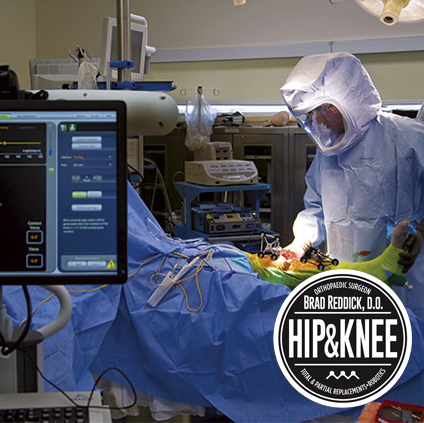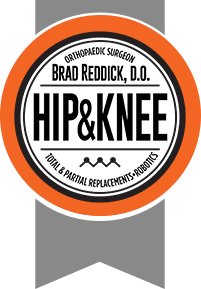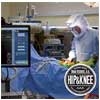Brad Reddick, DO
Orthopedic Surgeon
What should you know about robotic knee surgery?
Robotic surgery really does seem like the wave of the future in almost every arena of healthcare. While it does feel a bit “sci-fi”, robots are increasingly used in the surgical suite – particularly with orthopedic joint replacement. For the right patient, robots can help improve accuracy — which can mean better outcomes for patients.
healthcare. While it does feel a bit “sci-fi”, robots are increasingly used in the surgical suite – particularly with orthopedic joint replacement. For the right patient, robots can help improve accuracy — which can mean better outcomes for patients.
If you’re thinking about having a knee or hip replacement, you may already know that the robot is an option. What you need to know is if it is the best option, says orthopedic surgeon Bradley Reddick, DO. If you’re a good candidate for joint replacement surgery in general, robotic joint replacement is likely one of your options.
“We use the robot for all of our knee replacements and in our partial knee replacements. Additionally, we use the robot in many of our hip replacements. Our goal is to make sure that we match up our patients and our best technology to get the very best outcomes,” he says.
And Dr. Reddick knows what he’s talking about. Before the robot was first brought to Oklahoma City, Dr. Reddick was instrumental in helping Stryker Mako (the manufacturer of the robot) develop criteria to maximize surgical outcomes for knee patients. When Stryker Mako began creating protocols for hip replacement, they again contacted Dr. Reddick to help lead the development. He currently serves as Oklahoma’s Consulting Physician for both knee and hip procedures.
How The Mako Robot Works
By itself, the robot is just a robot. It can’t do anything without the proper physician controlled measurements, treatment plan and guidance. The robot doesn’t doesn’t operate on its own, but rather helps the surgeon do the work in a computer controlled fashion. IN fact, the robot is only as good as the doctor who is controlling it.
Surgical precision is really the biggest boost to robotic surgery. During the pre-planning phase, the doctor can feed in information about the patients unique surgical needs. This helps to ensure the physician is getting the most precise fit and position of the implant. “The robotic arm positions the blade for joint replacements,” Dr. Reddick says. “The arm positions the tool so that it is precise, consistent and on the correct angle. The additional step adds precision and removes any human error that might occur during the procedure. There is a noticeable improvement in the way the implant fits, and that is a huge step forward for our patients.”
Is The Robot Really Better?
The fit that the robot provides for knee patients is better – so yes, the robot adds a dimension to our procedure that isn’t as precise when performed by hand. But, every patient is as individual as their finger print – so there is no one size fits all surgery. The truth is, the best procedure for any individual depends on their anatomy. “While I almost always opt for the robot during knee procedures, we may or may not use it for a hip procedure. The real determination comes when we have all the surgical evidence and measurements. “Hip anatomy can be a bit trickier, and many times requires a bit of thinking ‘outside the box’ to get the best outcomes. We always prefer to build our surgical plan around the patient – not the robot.”
With that being said, Dr. Reddick added that he believes the robot is the one tool that he wouldn’t trade. He believes the technology will continue to grow by increasing the precision and accuracy beyond the capabilities of the human hand.
“Robotic surgery is rising in popularity among physicians who perform multiple cases of joint replacement every week. It’s not faster, or easier, or even less complicated for the surgeon – but in many cases, it is clearly better for our patients,” says Dr. Reddick
Dr. Reddick is one of the country’s most experienced robotic hip and knee surgeons. He helped pioneer the technology and puts it to work in his practice every week.
2/2020






